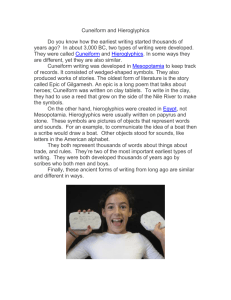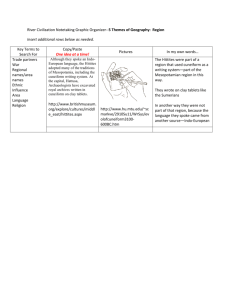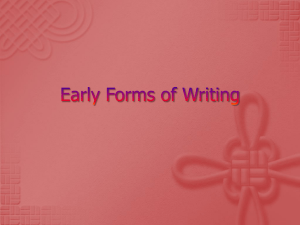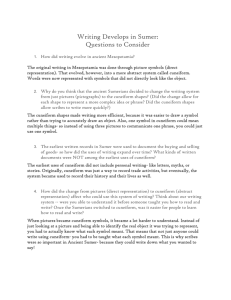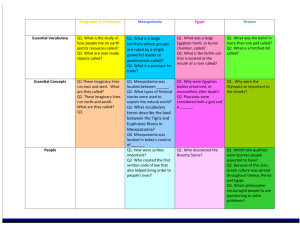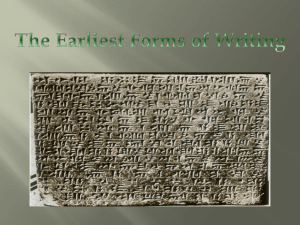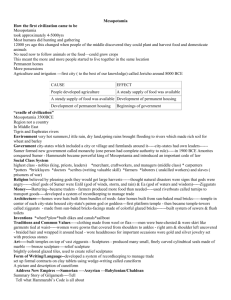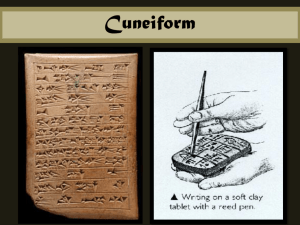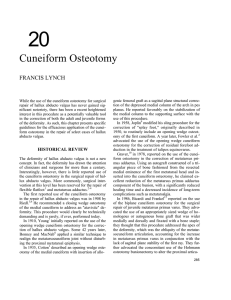The Rise of Civilization - Metropolitan Museum of Art
advertisement
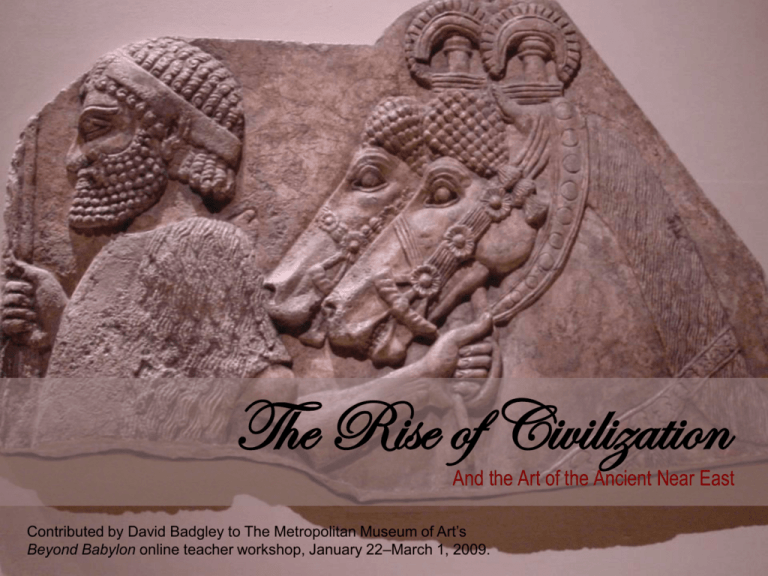
The Rise of Civilization And the Art of the Ancient Near East Continued from August 26th Contributed by David Badgley to The Metropolitan Museum of Art’s Beyond Babylon online teacher workshop, January 22–March 1, 2009. • Mesopotamia = Greek for “land between the rivers” • The Ancient Near East consists of these modern day countries: – Israel, Jordan, Lebanon, Syria, Turkey and Iraq. • Neolithic cultures preferred the uplands whereas • Civilization brought mankind to the valley floor and river beds. What is Civilization? • Organized Government • Organized Religion – Gods;Teachers/leaders; and Places of Worship • Organized Economy • Arts, Culture & Traditions – Monumental Works; Music; Theater; Painting; Sculpture; methods of preparing food • Technological Advancement • Permanent Settlement • System of Writing – Record keeping; education; Communication; Literature • In about 3300 B.C.E. writing was invented in Mesopotamia – maybe in the city of Uruk, – where a lot of the earliest inscribed clay tablets have been found. – Writing was not an isolated development • but happened during a period of profound transformations – in politics, economy, and representational art. • Early writing was used most for recording and storing economic information – Signs were drawn with a reed stylus on pillowshaped tablets, – most were only a few inches wide. – The stylus created small marks in the clay • called cuneiform, or wedge-shaped, writing. • This tablet most likely documents grain distributed by a large temple – but because there are no verbs in early texts it is difficult to interpret the tablets with certainty. • The seal impression depicts a male figure guiding two dogs on a leash and hunting or herding boars in a marsh environment. Interior view of an important document Exterior view of the same important document Notice the summary written about what the document is about The document is “authentic” because it as been “signed” by using a cylinder seal. Is Writing Important? • What kinds of written records might be important to you or your parents? – Did you pay your taxes? – Are you legally married? – How many people live in your city? – Is your Doctor, Lawyer or clergy qualified to do their jobs? – Your high school diploma? • http://www.upennmuseum.com/cuneiform.cgi These images are what some of our letters look like when converted to cuneiform The beginning of writing, takes its name from the wedge-shaped signs or pictographs (simplified pictures). Cuneiform Cuneiform tablet and case with a record of court testimony describing a dispute over the ownership of a business firm Old Assyrian Colony; 1920-1840 B.C.E. Anatolia, Kultepe (Karum Kanesh) Clay; 7 5/16 x 3 9/16 x 1 3/4 in. (18.5 x 9 x 4.5 cm) Gift of Mr. and Mrs. J. J. Klejman, 1966 (66.245.5b) Collection of Metropolitan Museum, New York • Think of a recent conflict that needed to be resolved. • Invent a system of “writing” that you will use to record this event. • If your life is conflict free, then invent a system of “writing” to record a secret • Create a “document” • Carve a cylinder seal to ensure authenticity and security • Apply the seal Resources http://images.google.com/imgres?imgurl=http://www.britarch.ac.uk/yac/branches/bridgend/images/cuneiform%2520t able.jpg&imgrefurl=http://www.britarch.ac.uk/yac/branches/bridgend/2004.htm&usg=__bxFZTOsT4MlMf7DBXOhlfSt BhLQ=&h=258&w=531&sz=24&hl=en&start=12&um=1&tbnid=IvndrCMooUV8OM:&tbnh=64&tbnw=132&prev=/imag es%3Fq%3Dcuneiform%26um%3D1%26hl%3Den%26client%3Dsafari%26rls%3Den%26sa%3DN http://www.metmuseum.org/works_of_art/collection_database/ancient_near_eastern_art/cuneiform_tablet_and_cas e_with_a_record_of_court_testimony/objectview.aspx?page=1&sort=0&sortdir=asc&keyword=cuneiform&fp=1&dd1 =3&dd2=0&vw=1&collID=3&OID=30008409&vT=1 http://www.nlcs.k12.in.us/oljrhi/brown/mesopotamia/meso.htm Department of Ancient Near Eastern Art. "Geography of Mesopotamia". In Heilbrunn Timeline of Art History. New York: The Metropolitan Museum of Art, 2000ミ. http://www.metmuseum.org/toah/hd/m_wam/hd_m_wam.htm (October 2002)

